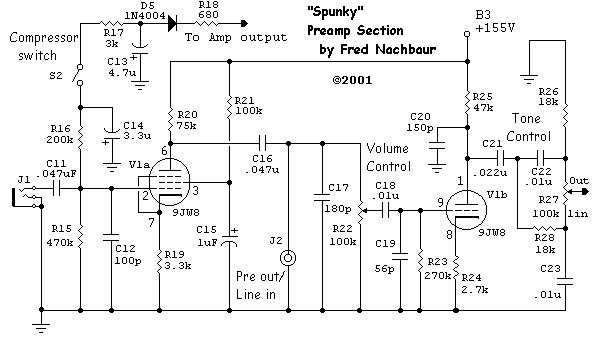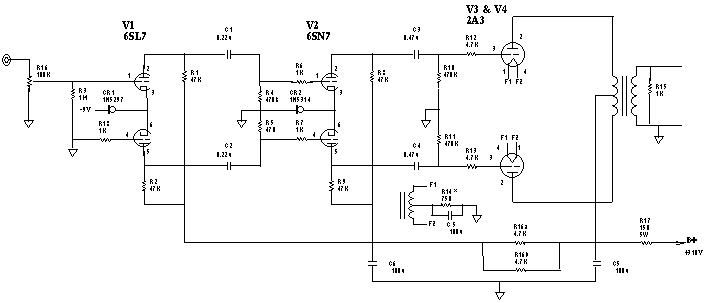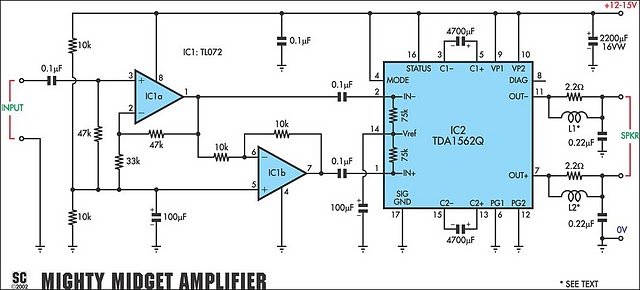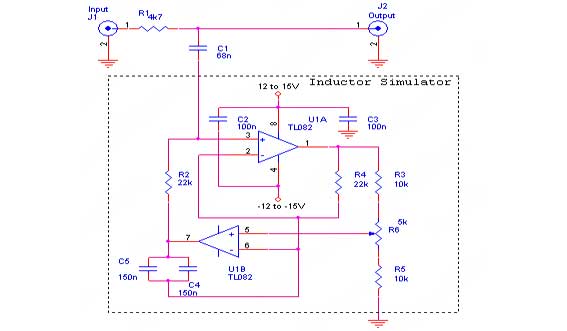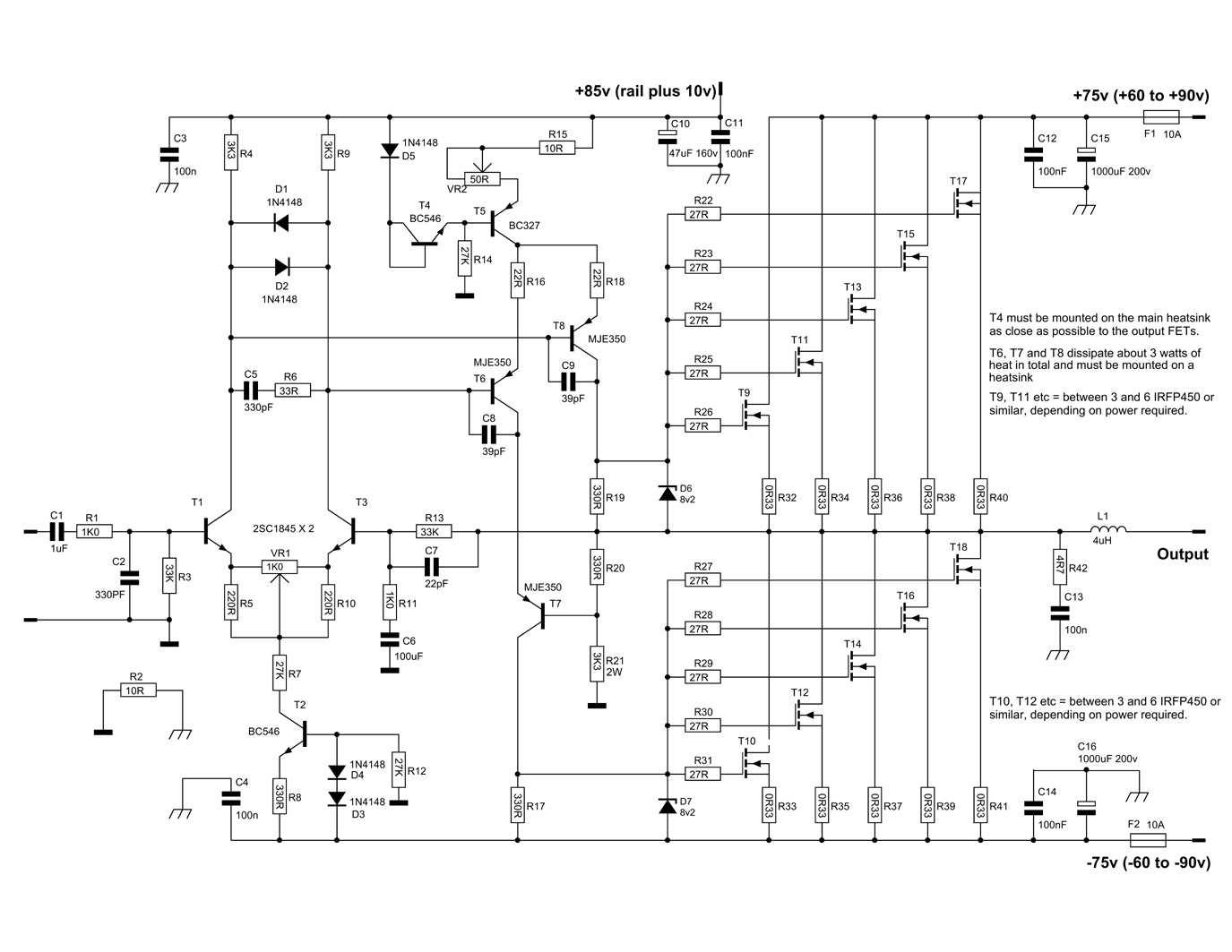
845 20W A1 class monotriode amplifier
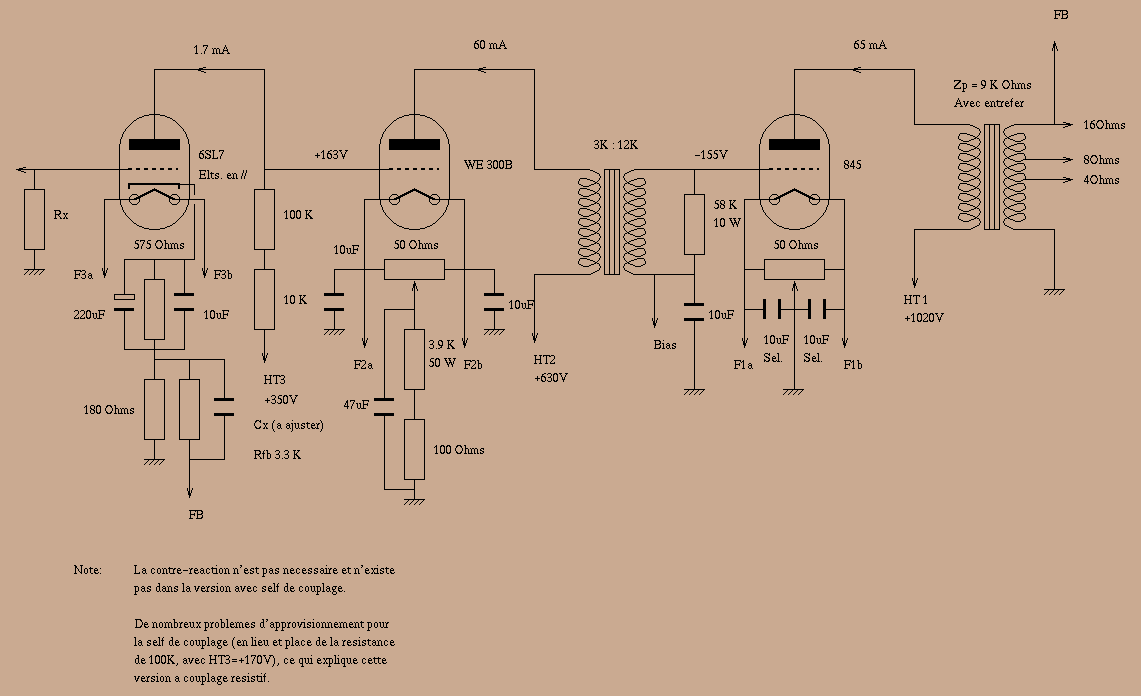
This project is finalized, that means it is no longer experimental. This amplifier, although limited in output power (20W), has been designed to give the best listening pleasure. No compromise has been made during components choice: the 845 output triode is one of the best tubes available today in that range of power for single-ended applications, the driver stage uses a 300B, a long revered audio tube (note that you must use a WE 300B or a Sovtek 300B). More: This technical choice has been made in some commercial (like Marantz T1) or amateur realizations and can be questionable since the 300B is itself difficult to drive. Nevertheless, the exceptional transparency of the 845 makes the driver stage prominent.
This amplifier circuit employs an elegant single-ended design, leveraging the characteristics of high-quality vacuum tubes to achieve superior audio fidelity. The heart of the amplifier is the 845 output triode, which operates in a Class A configuration to deliver up to 20 watts of output power. This power level is suitable for driving high-efficiency speakers, which can take full advantage of the amplifier's tonal richness and dynamic range.
The driver stage utilizes the 300B tube, known for its warm sound and smooth midrange response. However, it is important to note that the 300B requires a significant amount of voltage to operate effectively, necessitating careful design considerations to ensure that it is driven adequately. The circuit may include a high-voltage power supply designed to provide the necessary plate voltage for both the 300B and the 845 tubes.
In addition to the tube selection, the circuit design likely incorporates high-quality passive components, such as capacitors and resistors, to minimize signal degradation and enhance audio performance. Coupling capacitors are typically employed to connect the driver stage to the output stage while blocking DC voltage, allowing only the audio signal to pass through.
Feedback may be utilized in the circuit design to improve linearity and reduce distortion, although the use of feedback in tube amplifiers can be a contentious topic among audiophiles. The overall layout should be optimized for minimal signal path length, reducing potential interference and maintaining the integrity of the audio signal.
The chassis design must also be considered, as it will house the tubes and provide adequate ventilation to prevent overheating. Shielding may be incorporated to reduce electromagnetic interference from external sources, ensuring a clean audio signal.
In conclusion, this finalized amplifier project represents a culmination of careful component selection and thoughtful design, aimed at delivering an exceptional listening experience characterized by clarity, warmth, and musicality.This project is finalized, that means it is no longer experimental. This amplifier, altough limited in output power (20W), has been designed to give the best listening pleasure. No compromise has been made during components choice: the 845 output triode is one of the best tube available today in that range of power for single-ended applications, the driver stage uses a 300B, a long revered audio tube (note that you must use a WE 300B or a Sovtek 300B).
This technical choice has been made in some commercial (like Marantz T1) or amateur realisations and can be questionnable since the 300B is itself difficult to drive. Nevertheless, the exceptional transparancy of the 845 makes the driver stage proeminent 🔗 External reference
This amplifier circuit employs an elegant single-ended design, leveraging the characteristics of high-quality vacuum tubes to achieve superior audio fidelity. The heart of the amplifier is the 845 output triode, which operates in a Class A configuration to deliver up to 20 watts of output power. This power level is suitable for driving high-efficiency speakers, which can take full advantage of the amplifier's tonal richness and dynamic range.
The driver stage utilizes the 300B tube, known for its warm sound and smooth midrange response. However, it is important to note that the 300B requires a significant amount of voltage to operate effectively, necessitating careful design considerations to ensure that it is driven adequately. The circuit may include a high-voltage power supply designed to provide the necessary plate voltage for both the 300B and the 845 tubes.
In addition to the tube selection, the circuit design likely incorporates high-quality passive components, such as capacitors and resistors, to minimize signal degradation and enhance audio performance. Coupling capacitors are typically employed to connect the driver stage to the output stage while blocking DC voltage, allowing only the audio signal to pass through.
Feedback may be utilized in the circuit design to improve linearity and reduce distortion, although the use of feedback in tube amplifiers can be a contentious topic among audiophiles. The overall layout should be optimized for minimal signal path length, reducing potential interference and maintaining the integrity of the audio signal.
The chassis design must also be considered, as it will house the tubes and provide adequate ventilation to prevent overheating. Shielding may be incorporated to reduce electromagnetic interference from external sources, ensuring a clean audio signal.
In conclusion, this finalized amplifier project represents a culmination of careful component selection and thoughtful design, aimed at delivering an exceptional listening experience characterized by clarity, warmth, and musicality.This project is finalized, that means it is no longer experimental. This amplifier, altough limited in output power (20W), has been designed to give the best listening pleasure. No compromise has been made during components choice: the 845 output triode is one of the best tube available today in that range of power for single-ended applications, the driver stage uses a 300B, a long revered audio tube (note that you must use a WE 300B or a Sovtek 300B).
This technical choice has been made in some commercial (like Marantz T1) or amateur realisations and can be questionnable since the 300B is itself difficult to drive. Nevertheless, the exceptional transparancy of the 845 makes the driver stage proeminent 🔗 External reference

